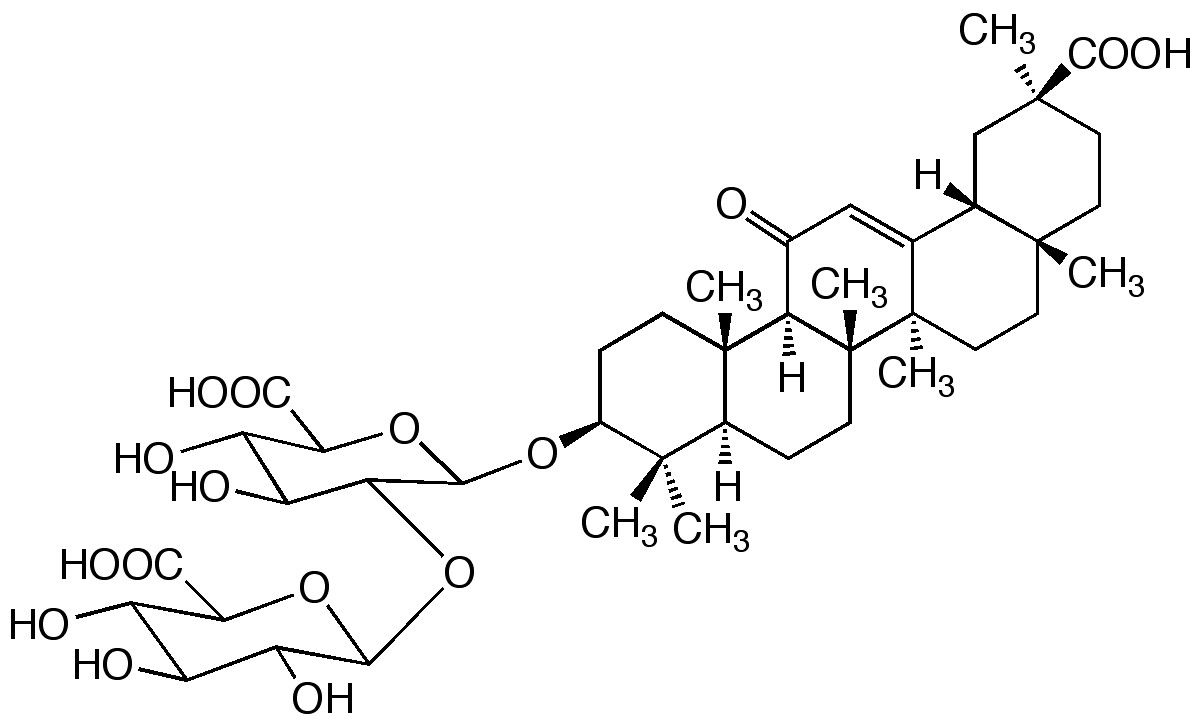Chemistry
Molecular formula: C42H62O16
Molecular weight: 822.93
Safety
Glycyrrhizin (as a component of licorice root) has a long history of use as a sweetener and as an herbal remedy. Studies have demonstrated that glycyrrhizin inhibits an enzyme that normally inactivates cortisol, so that consumption of licorice or glycyrrhizin in excess can raise the level of cortisol in the body above normal levels. Cortisol has anti-inflammatory properties, so glycyrrhizin can be beneficial in treating some conditions, but excessive cortisol can cause water retention, hypertension, and loss of potassium and calcium.
Glycyrrhizin has GRAS status in the United States for use as a flavoring agent, but not for use as a sweetener. The European Union's Scientific Committee on Food recommended an upper limit of 100 mg/day, which corresponds to about two ounces per day of licorice candy. The Food and Drug Administration stated that, for persons over 40 years of age, eating two ounces of black licorice a day for two weeks could cause serious health problems. A similar limit is recommended in Japan. Excess cortisol during pregnancy correlates with low birth weight, so glycyrrhizin and licorice consumption are discouraged during pregnancy.
